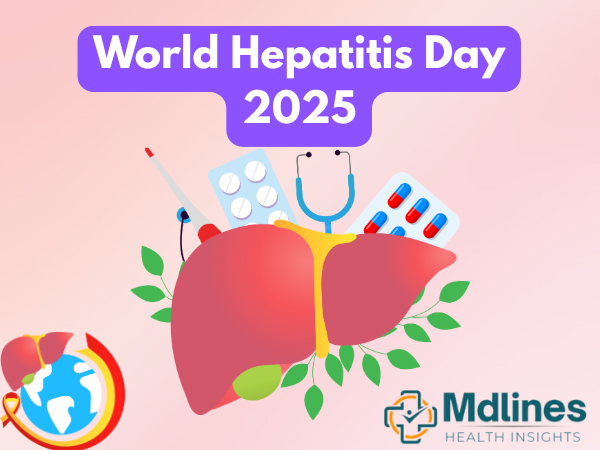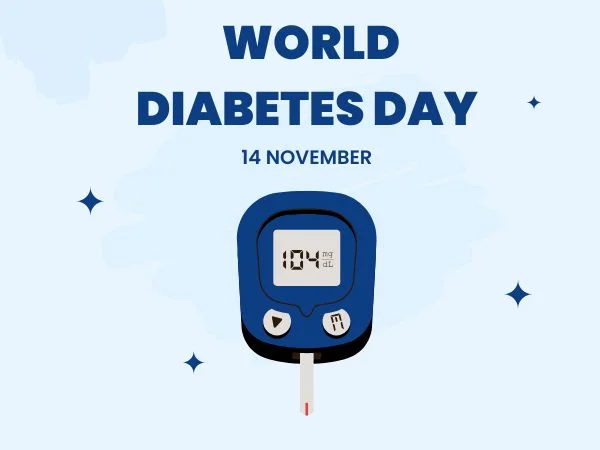In spite of increased global awareness, viral hepatitis continues to be a chronic health problem. As we mark World Hepatitis Day 2025, it is the time to lay aside the jargon and arguments of how the disease behaves, grows, and reacts to the treatments—particularly with new treatments and consciousness in 2025. As more individuals are already aware of the ABCs these days, the focus of this article is to discuss what is new, what is neglected, and how early detection and prompt treatment can quite literally save lives.

World Hepatitis Day 2025 Theme: More Than Just Awareness
The 2025 theme of World Hepatitis Day, “Hepatitis Can’t Wait – Act Now, Cure Fast,” is about early treatment and diagnosis to avert needless deaths. A life is lost to hepatitis disease every 30 seconds somewhere in the world-even though Hepatitis B and C are curable effective curable.
A 2024 WHO global hepatitis update revealed that more than 354 million individuals have hepatitis B or C infection but fewer than 9% of these individuals have been diagnosed and fewer than 5% of these individuals have been treated. The theme for 2025 World Hepatitis Day is reach more, particularly in low- and middle-income nations where late presentation is usually the first presentation of disease.
Note: The translation below was carried out from the English version of the chosen article.
World Hepatitis Day 2025 is dedicated to calling for a halt in stigma, accelerating screening, and battling best-in-class treatment that brings us one step nearer to WHO’s vision of elimination by the year 2030.
A Better Understanding of the Types of Hepatitis: A 2025 Perspective
There are five primary types of hepatitis—A, B, C, D, and E. Hepatitis A and E are typically acute and self-limiting, but Hepatitis B and C are chronic in nature and must be treated to prevent liver damage.
In a 2025 Journal of Hepatic Research article, it was reported that over 70% of patients with liver cancer have a history of chronic hepatitis B or C infection and thus again emphasizing the need for early diagnosis and control. Types of hepatitis differ according to mode of acquisition, course of disease, and response pattern to treatment:
- Hepatitis A & E: Feco-oral; vaccine available for A.
- Hepatitis B: Sexually transmitted and bloodborne; vaccine-preventable.
- Hepatitis C: Primarily bloodborne; no vaccine, but treatable.
- Hepatitis D: Dependent on co-infection with hepatitis B to replicate.
One must know the kinds of hepatitis because treatment is dependent on virus strain, patient, and course of disease.
Hepatitis B: A Silent Menace with New Treatment
Hepatitis B is a chronic infection that occurs in more than 296 million people worldwide, and its symptoms are only noticed after liver damage has established. It also develops in women as inexplicable fatigue, nausea, or amenorrhea, which are mostly confused with endocrine diseases.
A 2023 Lancent report had estimated hepatitis B to cause over 2 million deaths a year by 2030 if not treated. However, as of 2025, tenofovir alafenamide (TAF) has been a low-toxicity drug in the long term with improved patient compliance compared to the past.
Early global attention is drawn to the detection of Hepatitis B in pregnant women, dialysis patients, and HIV positives. Immunization against the disease at birth with the assistance of booster doses remains the first line of prevention, as stipulated by World Hepatitis Day 2025.
Women’s Hepatitis Symptom: Usually Underdiagnosed
Women do become symptomatically nonspecific hepatitis with a probable risk of being missed. They present as refractory fatigue, bloating, mood swings, or even mild presentations like mild jaundice or anorexia. Pregnancy augments the risk of hepatitis B and E and can result in preterm labor or maternal death.
A 2024 AIIMS Delhi study ensured 63% of hepatitis B-infected women were completely symptom-free and were detected by antenatal screening alone. This is a reflection of the complete lack of gender-specific diagnostic needs.
Increased awareness regarding the symptoms of hepatitis among women is on the World Hepatitis Day 2025 agenda, advocating for routine screening as an integral part of normal OB-GYN checks and menstrual abnormality tests.
Etiology of Hepatitis: Hygiene, Lifestyle, and Risk Factors
Etiology-directed specific prevention is enabled. Besides viral spread, alcoholism, unclean injections, unhealthy habits, and unsafe sex are some of the aetiological risk-permitting causes of hepatitis infection. One recent study released by ICMR (2024) documented intravenous drug abuse as a major carrier of hepatitis C in India’s urban and rural areas still affected by hepatitis A and E owing to water contamination. Etiology of hepatitis regrettably overlaps with the socio-economic determinants, i.e., education and public health policy form the main impetus for disease prevention.
2025 Hepatitis Treatment: What’s New?
Hepatitis care in 2025 has never been better. Chronic hepatitis B is well managed on once-daily antivirals and liver surveillance devices such as FibroScan, and hepatitis C cures are over 95% on DAAs. One of the breakthroughs in 2024 was that an advanced stage therapeutic hepatitis B vaccine was designed. The vaccine strengthens the ability of the immune system to kill the virus during chronic infection, a victory over the cure of hepatitis, Nature Medicine has reported.
Most significantly, these treatments are also being made affordable through public-private partnerships, and thus they are accessible to greater coverage in India, Brazil, and South Africa.
Is Hepatitis Curable? What the Data Reveals?
The most searched question is: Is hepatitis curable? The response depends on the type.
- Hepatitis A and E: Yes, they spontaneously resolve in most patients.
- Hepatitis C: Over 95% curable in 12 weeks with DAAs.
- Hepatitis B: Not curable, but highly well-managed on antivirals.
- Hepatitis D: Trickier to cure, but clinical trials are ongoing.
The catchphrase for 2025 World Hepatitis Day is access to curative treatment, specifically hepatitis C that is undiagnosed in wide swathes of the population due to cost and stigma. According to the WHO in 2023, treatment of hepatitis C in prisons and drug treatment centres alone would save 30% of liver disease deaths worldwide.
FAQs
Why is World Hepatitis Day celebrated?
– World Hepatitis Day is commemorated to create global concern for hepatitis—cause, cure, and the need for immediate testing and treatment. The day is also remembered in honor of Dr. Baruch Blumberg, the inventor of the hepatitis B virus and vaccine. Early diagnosis is also highlighted, particularly where access to care is limited, in accordance with the WHO 2025 World Hepatitis Day theme—quicker diagnosis and treatment.
What is the date of World Hepatitis Day in 2025?
– World Hepatitis Day in 2025 falls on July 28, Monday. It is also a health scientific achievement holiday of the liver’s health and an appeal for action all over the world according to WHO objectives.
What is Indian National Hepatitis Day?
– India celebrates National Hepatitis Day on 29th July after global celebrations to raise awareness about national-specific issues and concerns through the National Viral Hepatitis Control Programme (NVHCP). Both of these days help to create awareness regarding types of hepatitis, how to cure hepatitis, and if is hepatitis curable or not.
What Can You Do This World Hepatitis Day?
– As the countdown begins to 2025, it is evident that hepatitis is not only a health issue—but also a social one. You can do the following on World Hepatitis Day 2025:
- Screen yourself and your family members for hepatitis B and C.
- Campaign for regular hepatitis screening at your workplace and colleges.
- Raise awareness about women’s hepatitis.
- Share or post hepatitis stories or messages in favor of the cause of World Hepatitis Day 2025.
- Donate or volunteer to the NGOs involved in hepatitis research and campaign work.
Sum up,
The battle against hepatitis continues. But with new medicine, increasing awareness, and international momentum, World Hepatitis Day 2025 is a hopeful milestone. To know the types of hepatitis, to know the symptoms of hepatitis in women, and to know whether is hepatitis curable are not so much medical facts—they’re lifeline tools.
Let us take action now, be cautious, and contribute to the creation of a hepatitis-free world.

